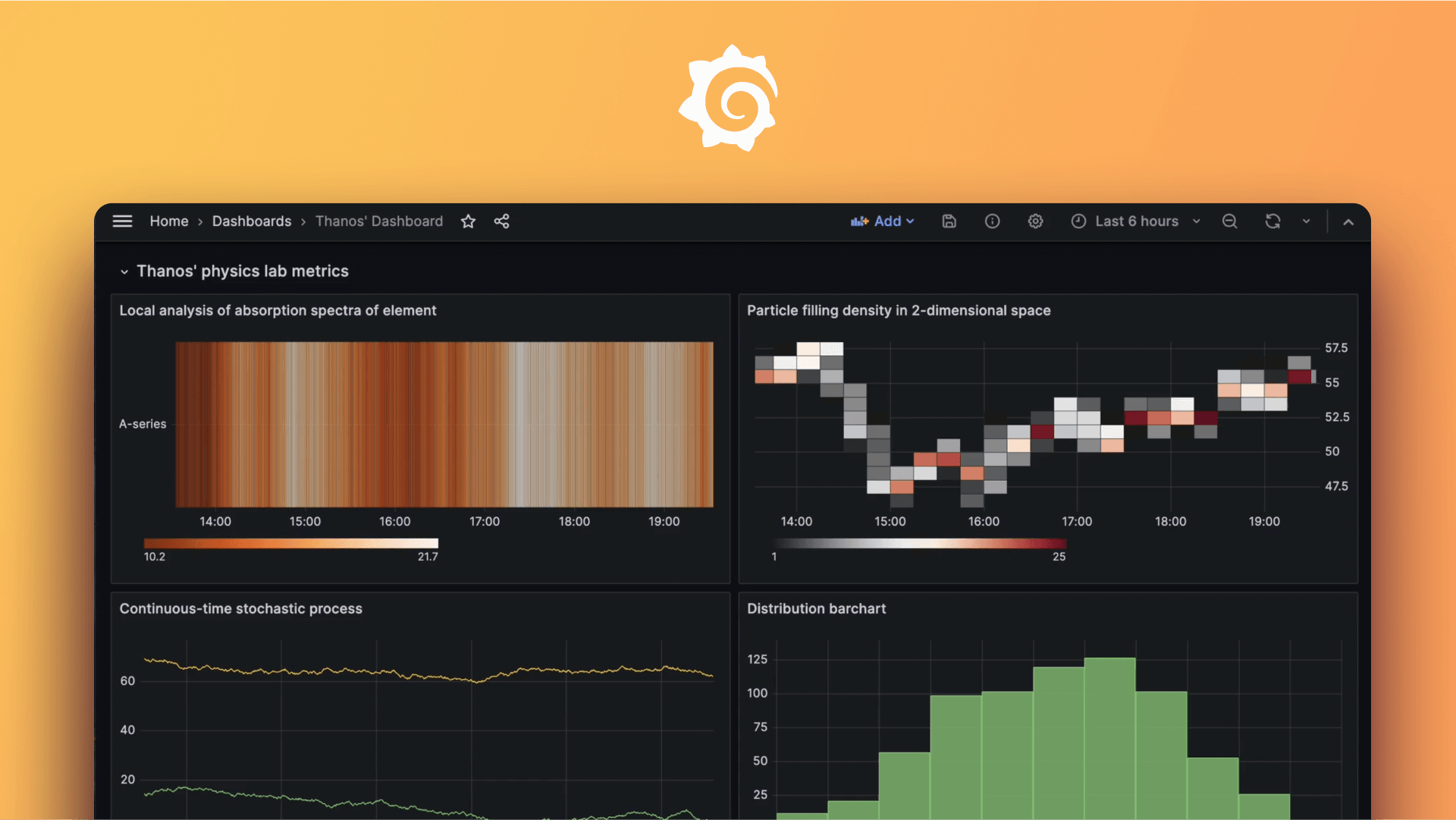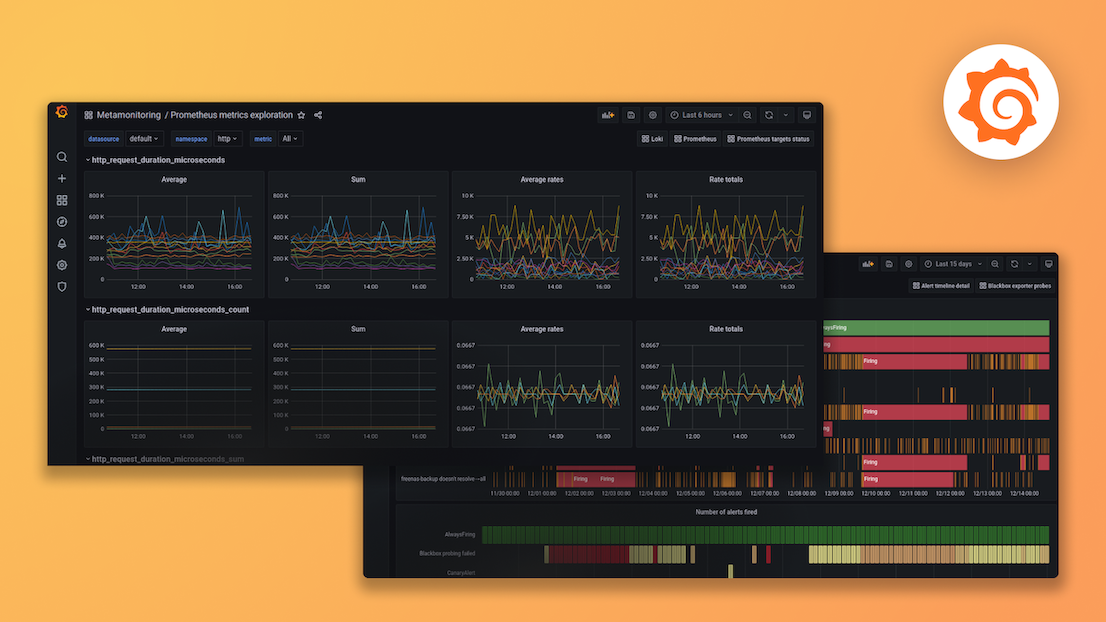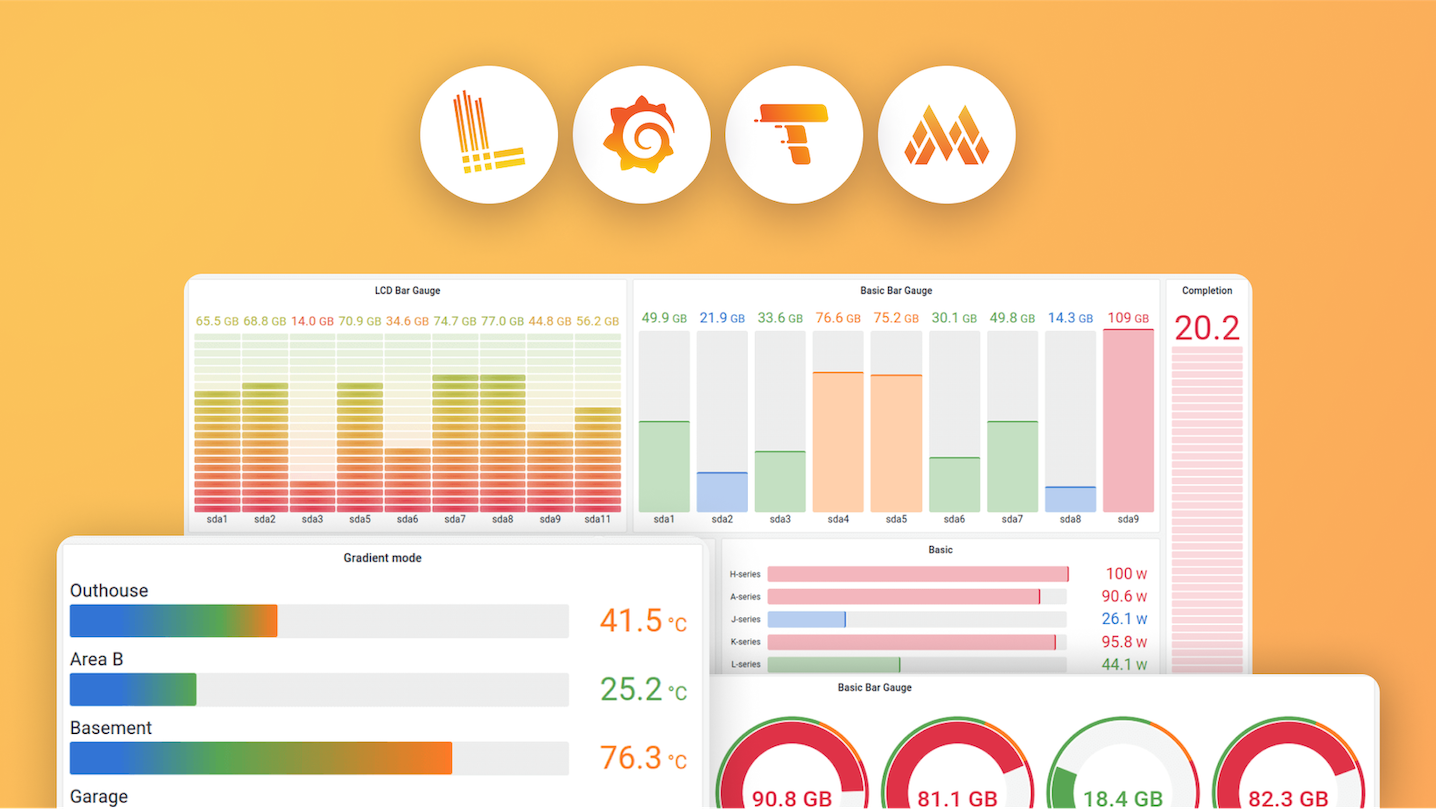Plugins 〉Pie Chart
The Pie Chart plugin has been deprecated and is no longer maintained.
Pie Chart
Notice: This plugin is deprecated
As of Grafana 8.0 Pie chart panel is included with Grafana. Please refer to the Pie chart panel documentation for more information.
Installation
Use the new grafana-cli tool to install piechart-panel from the commandline:
grafana-cli plugins install grafana-piechart-panel
The plugin will be installed into your Grafana plugins directory; the default is /var/lib/grafana/plugins if you installed the Grafana package.
More instructions on the Grafana CLI tool can be found in Grafana CLI.
You must have Grafana 4.6.5 or newer installed to run this plugin. You can get it here: https://grafana.com/grafana/download
Alternative installation methods
Download latest zip
wget -nv https://grafana.com/api/plugins/grafana-piechart-panel/versions/latest/download -O /tmp/grafana-piechart-panel.zip
Extract and move into place
unzip -q /tmp/grafana-piechart-panel.zip -d /tmp
mv /tmp/grafana-piechart-panel-* /var/lib/grafana/plugins/grafana-piechart-panel
sudo service grafana-server restart
Git clone
You can clone this repo directly into your plugins directory.
Afterwards restart grafana-server and the plugin should be automatically detected and used.
git clone https://github.com/grafana/piechart-panel.git --branch release-1.6.2
sudo service grafana-server restart
Clone into a directory of your choice
If the plugin is cloned to a directory that is not the default plugins directory, then you need to edit your grafana.ini config file (default location is at /etc/grafana/grafana.ini) and add this:
[plugin.piechart]
path = /home/your/clone/dir/piechart-panel
Note that if you clone it into the Grafana plugins directory, then you do not need to add the above config option. That is only if you want to place the plugin in a directory outside the standard plugins directory. Make sure that grafana-server has read access to the directory.
Grafana Cloud Free
- Free tier: Limited to 3 users
- Paid plans: $55 / user / month above included usage
- Access to all Enterprise Plugins
- Fully managed service (not available to self-manage)
Self-hosted Grafana Enterprise
- Access to all Enterprise plugins
- All Grafana Enterprise features
- Self-manage on your own infrastructure
Grafana Cloud Free
- Free tier: Limited to 3 users
- Paid plans: $55 / user / month above included usage
- Access to all Enterprise Plugins
- Fully managed service (not available to self-manage)
Self-hosted Grafana Enterprise
- Access to all Enterprise plugins
- All Grafana Enterprise features
- Self-manage on your own infrastructure
Grafana Cloud Free
- Free tier: Limited to 3 users
- Paid plans: $55 / user / month above included usage
- Access to all Enterprise Plugins
- Fully managed service (not available to self-manage)
Self-hosted Grafana Enterprise
- Access to all Enterprise plugins
- All Grafana Enterprise features
- Self-manage on your own infrastructure
Grafana Cloud Free
- Free tier: Limited to 3 users
- Paid plans: $55 / user / month above included usage
- Access to all Enterprise Plugins
- Fully managed service (not available to self-manage)
Self-hosted Grafana Enterprise
- Access to all Enterprise plugins
- All Grafana Enterprise features
- Self-manage on your own infrastructure
Grafana Cloud Free
- Free tier: Limited to 3 users
- Paid plans: $55 / user / month above included usage
- Access to all Enterprise Plugins
- Fully managed service (not available to self-manage)
Self-hosted Grafana Enterprise
- Access to all Enterprise plugins
- All Grafana Enterprise features
- Self-manage on your own infrastructure
Installing Pie Chart on Grafana Cloud:
Installing plugins on a Grafana Cloud instance is a one-click install; same with updates. Cool, right?
Note that it could take up to 1 minute to see the plugin show up in your Grafana.
Installing plugins on a Grafana Cloud instance is a one-click install; same with updates. Cool, right?
Note that it could take up to 1 minute to see the plugin show up in your Grafana.
Installing plugins on a Grafana Cloud instance is a one-click install; same with updates. Cool, right?
Note that it could take up to 1 minute to see the plugin show up in your Grafana.
Installing plugins on a Grafana Cloud instance is a one-click install; same with updates. Cool, right?
Note that it could take up to 1 minute to see the plugin show up in your Grafana.
Installing plugins on a Grafana Cloud instance is a one-click install; same with updates. Cool, right?
Note that it could take up to 1 minute to see the plugin show up in your Grafana.
Installing plugins on a Grafana Cloud instance is a one-click install; same with updates. Cool, right?
Note that it could take up to 1 minute to see the plugin show up in your Grafana.
Installing plugins on a Grafana Cloud instance is a one-click install; same with updates. Cool, right?
Note that it could take up to 1 minute to see the plugin show up in your Grafana.
For more information, visit the docs on plugin installation.
Installing on a local Grafana:
For local instances, plugins are installed and updated via a simple CLI command. Plugins are not updated automatically, however you will be notified when updates are available right within your Grafana.
1. Install the Panel
Use the grafana-cli tool to install Pie Chart from the commandline:
grafana-cli plugins install The plugin will be installed into your grafana plugins directory; the default is /var/lib/grafana/plugins. More information on the cli tool.
Alternatively, you can manually download the .zip file for your architecture below and unpack it into your grafana plugins directory.
Alternatively, you can manually download the .zip file and unpack it into your grafana plugins directory.
2. Add the Panel to a Dashboard
Installed panels are available immediately in the Dashboards section in your Grafana main menu, and can be added like any other core panel in Grafana.
To see a list of installed panels, click the Plugins item in the main menu. Both core panels and installed panels will appear.
Change Log
[1.6.4] - 2022-11-04
- Fix readme
[1.6.3] - 2022-11-02
- Bump version for publishing
[1.6.2] - 2022-11-02
- Bump version for deprecation notice
- Update packages
- Switch to drone vs circleci
[1.6.1] - 2020-09-14
- Fixed issue with legend color picker #248
[1.5.0] - 2020-05-15
- Updated logo
- Sanitize legend header. Thanks rotemreiss #230
- Signed for Grafana 7.0
[1.4.0] - 2020-02-04
- Added combine option for legend
[1.3.9] - 2019-09-05
- Fixed dark/light mode text font colors: #189.
[1.3.8] - 2019-07-22
- Added hotfix for older versions of grafana
[1.3.7] - 2019-07-22
- Converted to typescript.
- Fixed several bugs.
- Fixed 6.3 compatibility.
- Used toolkit for building.
- Fixed for issue #154.
1.3.3
- Fixed legend sorting: #145
1.3.2
- Automatically set legend width if Internet Explorer 11 and positioned to the right: #148
1.3.1
- Fixed scrolling and legend issues in Internet Explorer 11: #143
1.3.0
1.1.5
- Fixed color picker in legend
- Fixed - Values in legend are displayed raw, not with the correct unit. Thanks, @conet
- Fixed - Legend overlaps with graphs. Thanks, @smalik03
1.1.4
- Added support for combining small slices (https://github.com/grafana/piechart-panel/pull/43)
- Added option to show percentage in legend https://github.com/grafana/piechart-panel/pull/41
1.0.2
- Added piechart piece divider setting
- Removed unused code
- Added fontsize option for labels on graph
- Only show the displayed piechart value in legend
- Added possibility to pick stat to use for piechart











